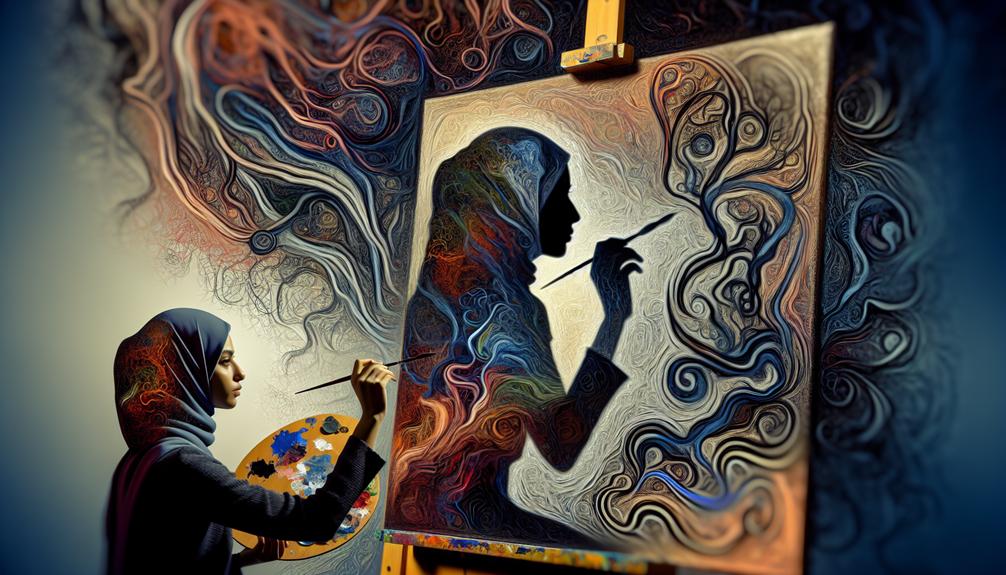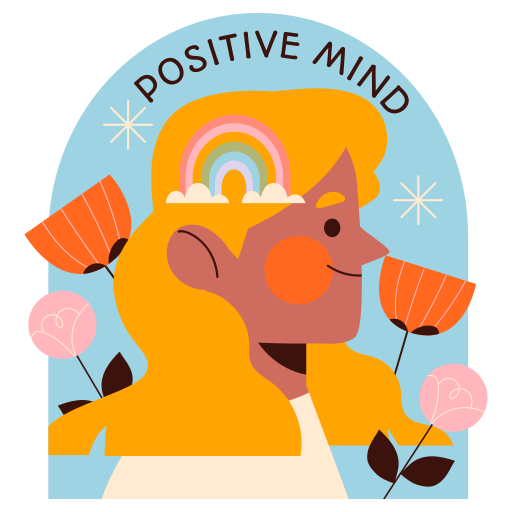Have you ever felt like there's a hidden side of you, lurking in the shadows? Exploring our shadow selves can be like discovering a secret world within ourselves. These hidden parts of us can impact how we relate to others, choose our careers, express our creativity, connect with our spirituality, and grow as individuals. By shining a light on these mysterious aspects, we can embark on a journey of self-discovery and change. Understanding our shadow selves can help us become more aware and confident, leading us to live a more genuine and satisfying life. So, are you ready to delve into the depths of your own shadow self and uncover what lies beneath the surface? Let's explore this fascinating world together and see how it can transform our lives for the better.
Common Shadow Self Traits
Common shadow self traits encompass a range of negative emotions and behaviors that individuals may suppress or deny within themselves. Examples of such traits include envy, insecurity, anger, greed, and laziness. These traits often stem from unresolved childhood insecurities and experiences. The shadow self represents the darker aspects of one's personality that have been relegated to the unconscious mind. Traits like manipulation, deceit, and self-sabotage are commonly associated with the shadow self, emerging in times of fear, guilt, shame, or when projecting insecurities onto others.
Recognizing and acknowledging these shadow self traits is essential for personal growth and self-awareness. By bringing these hidden aspects of the self into the light, individuals can begin to integrate and heal these wounded parts of themselves. This process of self-exploration and acceptance is fundamental in fostering a deeper understanding of one's motivations, actions, and relationships with others.
Shadow Self in Relationships
In relationships, the shadow self can materialize through trust issues, communication breakdowns, and conflicts. This may result in projection and blame dynamics that hinder healthy interactions. Acknowledging and addressing these shadow aspects can pave the way for improved understanding and emotional connection between partners.
Trust Issues in Relationships
Trust issues in relationships, stemming from past betrayals or emotional wounds within the shadow self, can greatly impact the dynamics and intimacy between partners. Addressing these issues is essential for personal growth and healthier relationships. Here are some key points to ponder:
- Challenges in Building Trust: The shadow self's unresolved traumas can hinder the ability to trust and be vulnerable.
- Struggles in Maintaining Trust: Past betrayals may lead to skepticism, making it difficult to maintain trust over time.
- Healing and Growth: Confronting and healing these trust issues can pave the way for personal growth and emotional healing.
- Impact on Relationship Dynamics: Trust issues can create communication breakdowns, intimacy barriers, and cycles of distrust.
Communication Breakdowns and Conflicts
Addressing issues of communication breakdowns and conflicts within relationships, particularly stemming from the shadow self, is paramount for fostering understanding and harmony between partners. Lack of effective communication skills can lead to misunderstandings and conflicts, often fueled by projection of one's insecurities onto the other, resulting in jealousy, possessiveness, and control issues. These behaviors hinder emotional intimacy and vulnerability in relationships. By acknowledging and working on the shadow self, individuals can improve their emotional regulation, empathy, and overall relationship satisfaction. The table below illustrates the impact of shadow self traits on communication and conflict resolution in relationships:
| Shadow Self Trait | Impact on Relationships |
|---|---|
| Poor Communication Skills | Misunderstandings and conflicts arise due to ineffective communication. |
| Insecurity | Leads to jealousy, possessiveness, and control issues within the relationship. |
| Lack of Emotional Intimacy | Hinders the development of emotional closeness and vulnerability in relationships. |
Projection and Blame Dynamics
Projection and blame dynamics in relationships reveal underlying aspects of the shadow self that influence interpersonal interactions and emotional dynamics to a great extent. When individuals project their own undesirable traits onto others or engage in blaming behaviors, it often signifies unresolved issues within themselves. Addressing projection and blame dynamics requires self-reflection, open communication, and taking accountability for one's actions. By recognizing these patterns and exploring the shadow self, personal growth becomes attainable within relationships. Understanding the role of projection and blame can lead to healthier interactions, increased empathy, and a more profound connection with others. It is vital to acknowledge these dynamics as opportunities for introspection and improvement rather than sources of conflict.
- Recognizing one's own projections fosters empathy and understanding.
- Open communication can help uncover the root causes of blame dynamics.
- Self-reflection is key to revealing hidden aspects of the shadow self.
- Embracing accountability paves the way for personal growth within relationships.
Shadow Self in Career
In the domain of professional endeavors, individuals may encounter their Shadow Self, which can manifest as internal obstacles that hinder career growth and fulfillment. The Shadow Self in career often presents itself through fear of failure, self-doubt, and imposter syndrome, impacting performance and decision-making. This inner shadow affects individuals by leading to self-sabotaging behaviors, reluctance to take risks, and struggles in asserting their worth in the workplace. Examples of such behaviors include avoiding challenging projects, downplaying achievements, and feeling undeserving of success due to internalized negative beliefs.
Addressing the Shadow Self in career is important as it can impede career advancement and create barriers to fulfilling one's professional potential. Engaging in Shadow Work exercises can help individuals recognize and overcome these negative patterns, leading to increased confidence, improved self-esteem, and more positive professional relationships. By acknowledging and working through these challenges, individuals can release their true capabilities and thrive in their careers.
Shadow Self in Creativity

Exploring the interplay between the shadow self and creativity reveals a profound connection that can greatly impact artistic expression and innovation. When artists investigate their shadow self, they access repressed emotions and experiences, fueling their creativity with raw and authentic material. This exploration often leads to a deeper understanding of the self, resulting in more genuine and profound artistic expressions. To evoke emotion in the audience, consider the following:
- Unleashing Darkness: By investigating their shadow self, artists can release hidden depths within themselves, leading to more complex and compelling creative works.
- Integration of Light and Dark: Integrating the shadow self's darker aspects into their artistic process allows creators to access a wider range of emotions and experiences, enriching their work.
- Inspiration from Pain: The shadow self can be a wellspring of inspiration and motivation, driving artists to channel their struggles and pain into their art, creating impactful pieces.
- Enhancing Depth: Acknowledging and working with the shadow self adds layers of complexity and authenticity to artistic output, enhancing the depth and resonance of creative endeavors.
Shadow Self in Spirituality
The shadow self in spirituality serves as a mirror reflecting the concealed facets of an individual's psyche, inviting exploration towards self-revelation and inner transformation. Embracing the shadow self in spirituality involves acknowledging and integrating these darker aspects for holistic growth. Through spiritual practices like meditation, self-reflection, and shadow work, individuals can explore their hidden aspects, such as anger, jealousy, and fear, which are often suppressed or denied. By understanding and working with the shadow self, individuals can achieve greater self-awareness, inner peace, and spiritual wholeness.
| Shadow Self in Spirituality |
|---|
| Acknowledging hidden aspects |
| Embracing darker traits |
| Integration for holistic growth |
In spirituality, the path to accepting the shadow self is a path to inner peace and self-awareness. By engaging in shadow work and integrating these hidden aspects, individuals can experience holistic growth and a deeper understanding of themselves.
Shadow Self in Self-Development

Exploring the Shadow Self in the domain of self-development involves understanding hidden aspects of one's personality, uncovering inner conflicts that may be hindering personal growth, and ultimately embarking on the path towards self-awareness and improvement. By acknowledging and integrating these shadow elements, individuals can navigate their complexities, confront limiting beliefs, and endeavor towards a more authentic and fulfilling existence. Embracing the Shadow Self in self-development is a transformative process that encourages individuals to confront their inner demons, fostering resilience, and promoting personal growth along the way.
Understanding Hidden Aspects
Within the domain of self-development, a fundamental aspect to ponder is the understanding of hidden aspects, specifically the shadow self. The shadow self is formed by repressed emotions, desires, and traits that individuals deem unacceptable, often originating from childhood experiences, societal conditioning, and personal traumas. By exploring these hidden aspects, individuals can achieve increased self-awareness, paving the way for personal growth and emotional healing. Understanding these facets enables individuals to confront fears, address inner conflicts, and ultimately work towards a more authentic self. Integrating the shadow self is important for holistic self-development, nurturing psychological well-being, and fostering healthier relationships.
- Confront fears
- Address inner conflicts
- Achieve authenticity
- Foster healthier relationships
Uncovering Inner Conflicts
Understanding the depths of one's psyche involves a meticulous examination of the hidden conflicts that obstruct personal development, particularly focusing on the shadow self within self-improvement practices. Uncovering inner conflicts is crucial in self-development as it requires identifying repressed emotions, desires, and shadow aspects like self-doubt and fear of failure. This process can reveal hidden insecurities, unresolved trauma, and suppressed anger that impede personal growth. By exploring shadow work, individuals can integrate rejected parts of themselves for holistic growth. Addressing these inner conflicts through shadow work leads to increased self-awareness, emotional healing, and authentic self-expression. Embracing this journey allows individuals to confront their shadow aspects, paving the way for profound self-discovery and transformation.
Embracing Personal Growth
In the domain of self-development, encountering personal growth through the exploration of the shadow self is a pivotal step towards holistic well-being and emotional resilience. Embracing your Shadow Self can be transformative, leading to a deeper understanding of oneself and fostering emotional healing. Utilizing shadow work prompts to identify your inner shadow allows for the recognition of negative emotions and shadow traits that might be holding you back. By embracing your inner self, including shadow archetype and inner darkness, one can confront emotional reactions and unresolved issues, ultimately integrating them for personal growth. This journey often involves addressing the inner child within, allowing for a more authentic and resilient self to emerge.
Frequently Asked Questions
What Are Signs of the Shadow Self?
Signs of the shadow self manifest through dark traits, unconscious behaviors, hidden fears, repressed emotions, inner struggles, subconscious desires, negative patterns, self-sabotage, psychological defense, and unresolved trauma. These indicators reveal deep-seated aspects of the self.
How Do You Identify Your Shadow Self?
Self-reflection is key to identifying your shadow self. By exploring inner conflicts, emotional triggers, and unconscious patterns, you can welcome imperfections, confront fears, and increase self-awareness to integrate your dark side.
What Is an Example of a Shadow of a Person?
When considering the shadow of a person, it often represents aspects of their personality that are hidden or repressed. Examples may include dark emotions, hidden desires, unconscious fears, repressed memories, and self-sabotaging behaviors, revealing inner conflict and untapped potential.
What Does It Mean to Have a Shadow Self?
The concept of the shadow self delves into the depths of one's psyche, revealing hidden fears, desires, and unresolved conflicts stored in the unconscious mind. Self-reflection, exploration, and integration of these dark aspects foster personal growth and healing.

















